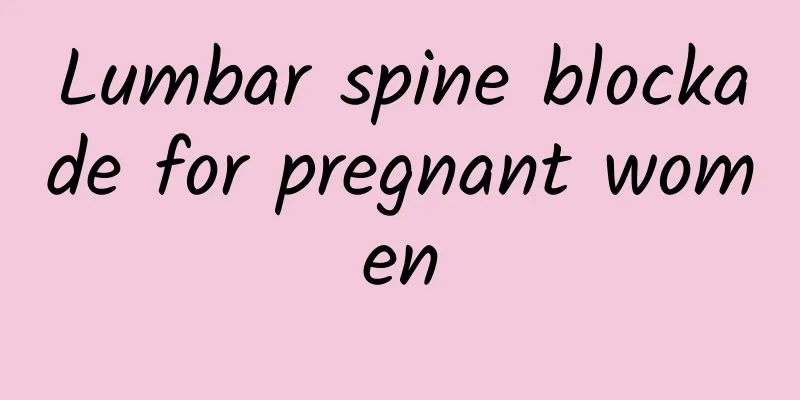How much do you know about the symptoms of cervical spondylotic myelopathy?

|
Many people simply think that there is only one type of cervical spondylosis and the symptoms are the same. Experts say this is not the case. There are many types of cervical spondylosis, and myelopathy is one of them. Its common symptoms include: 1. Pyramidal tract signs It is the main feature of spinal cervical spondylotic myelopathy. Its production mechanism is due to the direct compression of the pyramidal tract (corticospinal tract) by the compressive object or the reduction of local blood supply. Clinically, it often starts with weakness of the lower limbs, tightness of the legs (such as leggings), and a heavy feeling when walking. Gradually, symptoms such as feet stepping on cotton, unsteady steps, limping, easy kneeling (or falling), inability to leave the ground on toes, clumsy gait, and a feeling of chest tightness appear. During the examination, typical pyramidal tract symptoms such as hyperreflexia, ankle clonus, patellar clonus and muscle atrophy can be found. The abdominal wall reflex and cremaster reflex are mostly reduced or disappeared. Objects held in the hands are easily dropped (indicating that the deep part of the pyramidal tract has been affected), and finally spastic paralysis occurs. The order of arrangement of the pyramidal tracts in the spinal cord from the inside to the outside is the nerve fibers of the cervical upper limbs, thoracic, lumbar lower limbs and sacrum. Depending on the affected parts, they can be divided into three types: central type (upper limb type), peripheral type (lower limb type), and anterior central vascular type (limb type). (1) Central type (upper limb type): The deep part of the pyramidal tract is affected first. Because this nerve fiber bundle is close to the central canal, it is also called the central type. Symptoms start in the upper limbs and then spread to the lower limbs. The pathological changes are mainly caused by compression or stimulation of the sulcal artery. If one side is compressed, symptoms will appear on one side; if both sides are compressed, bilateral symptoms will appear. (2) Peripheral type (lower limb type): refers to the pressure acting on the surface of the pyramidal tract first, causing symptoms to appear in the lower limbs first. When the pressure continues to increase and affects the deep fibers, the symptoms spread to the upper limbs, but the severity is still most severe in the lower limbs. The main mechanism of its occurrence is the direct compression of the anterior wall of the dura mater sac by osteophytes or herniated nucleus pulposus in front of the spinal canal. (3) Anterior central vascular type (limb type): The disease affects both the upper and lower limbs at the same time. It is mainly caused by involvement of the anterior central spinal artery, which affects the area innervated by this blood vessel, causing ischemia in the anterior part of the spinal cord and producing symptoms. The characteristics of this type are rapid onset of illness and rapid recovery after treatment; non-surgical treatment is effective. The above three types can be further divided into mild, moderate and severe degrees according to the severity of the symptoms. Mild refers to the early stage of symptoms, and although there are symptoms, the patient can still work; moderate refers to the loss of ability to work, but can still take care of himself; if the patient is bedridden, unable to get out of bed, and has lost the ability to take care of himself, it is severe. Generally, patients with severe cases still have hope of recovery if the pressure-causing object can be removed early. However, if the disease continues to develop to the point where the spinal cord degenerates or even cavities form, it will be difficult to reverse the spinal cord function. 2. Limb numbness This is mainly due to the simultaneous involvement of the spinal thalamic tract. The arrangement order of the fibers in this tract is similar to the former. From the inside to the outside, they are the nerve fibers of the cervical upper limbs, chest, lumbar lower limbs, and sacrum. Therefore, the location and type of symptoms are consistent with the former. The pain, temperature and touch fibers in the spinothalamic tract are distributed differently, so the degree of compression is also different. That is, pain and temperature sensations are obviously impaired, while the sense of touch may be completely normal. 3. Reflex disorder (1) Physiological reflex abnormalities. Depending on the spinal cord segment affected by the lesion, various physiological reflexes will show corresponding changes, including the biceps reflex, triceps reflex and radial periosteal reflex of the upper limbs, and the knee jerk reflex and Achilles tendon reflex of the lower limbs. Most of them are hyperactive or active. In addition, the abdominal wall reflex, cremaster reflex and anal reflex may be weakened or disappear. (2) Among the pathological reflexes, Hoffmann's sign and palmo-chin reflex have the highest positive rate; in the later stage of the disease, ankle clonus, patellar clonus and Babinski's sign may also appear. 4. Autonomic nervous system symptoms It is not uncommon clinically and may involve all systems of the body, among which the gastrointestinal tract, cardiovascular and urinary systems are the most common. Many patients only recall that it may be caused by cervical spondylosis when their symptoms improve after decompression surgery. It can be seen that it is often difficult to detect without detailed inquiries before surgery. 5. Defecation and urination dysfunction It usually appears in the later stage, initially with urinary urgency, poor bladder emptying, frequent urination and constipation, which gradually lead to urinary retention or incontinence. |
<<: Take five precautions to keep cerebral thrombosis away from you
>>: How to detect autism? Early signs of autism
Recommend
How to improve cold buttocks
Some people always feel that their buttocks are c...
Indications of moxibustion therapy
I have always felt that traditional Chinese medic...
Why do girls also have throats?
Some women feel surprised and a little embarrasse...
I have a nub on my chin that causes toothache when I press it
The importance of teeth to us is unquestionable. ...
What to do if your eyes are burned by electric welding? Emergency treatment methods
Anyone who has seen electric welding work knows t...
These are the symptoms of mumps!
Mumps, which we often call mumps, can occur throu...
Chinese patent medicine for removing dampness, promoting blood circulation and removing blood stasis
Many diseases in the human body are related to ex...
What to do if ringworm grows on the eyelids
The treatment of tinea eyelids is similar to that...
What to do if you have stomachache and sweating
If the stomach pain is severe, it will often caus...
Remove mosquito bite scars
Summer not only has annoying high temperatures, b...
What to do if you have constipation
Constipation is a situation that most of us often...
Is leucorrhea an egg?
Leucorrhea is not an egg. It is a vaginal secreti...
What tea should I drink to clean my intestines and remove stool? These three teas can be drunk regularly
In life, if there is feces in the body, it often ...
How to make stew pot sauce
Many people like to eat stewed pot, especially in...
Why are my fingers numb?
In life, our fingers help us complete most of our...









